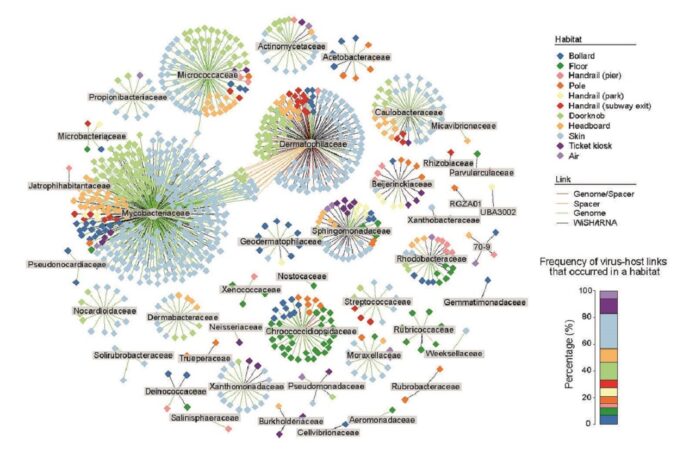In man-made environments, such as hospitals, offices, and homes, the intricate interactions between viruses and bacteria are pivotal in shaping microbial communities and impacting human health. Understanding these interactions is essential for devising effective strategies to control the spread of infectious diseases and maintain a healthy environment.
In this study, researchers delve into the hidden dynamics of viruses and bacteria in man-made environments, aiming to illuminate their interactions and uncover the secrets that govern their coexistence and potential implications for human well-being. By unraveling these intricate relationships, valuable insights can be gained to inform the development of targeted interventions and mitigate the risks associated with viral and bacterial pathogens in built environments.
A recent study by City University of Hong Kong (CityU) scientists revealed frequent interactions between viruses and bacteria in man-made environments. These viruses can assist bacteria in adapting and surviving in nutrient-depleted environments by inserting unique genes. The research aims to understand these virus-bacteria interactions, identify the spread of antibiotic-resistance genes, and develop control strategies to minimize human exposure to harmful microorganisms.
Professor Patrick Lee Kwan-Hon in the School of Energy and Environment (SEE) at CityU, who led the study, said, “As more and more of the global population are living in urban areas, the importance of hygiene in man-made environments is growing, particularly indoor ones, as occupants inside are constantly exposed to diverse microorganisms, which have public health implications. However, most previous studies of man-made environments overlooked viruses.”
Professor Lee added, “Therefore, in our study, we comprehensively investigated viruses in man-made environments and identified many novel molecular mechanisms in which viruses and bacteria interact. These findings are important not only for basic microbial science but also the management of man-made environments to protect residents’ health.”
In a comprehensive study conducted in Hong Kong, researchers collected 738 samples from various man-made environments, including public facilities and residences. The samples were taken from surfaces such as handrails, bollards, floors, poles, doorknobs, and even residents’ skin. Metagenomic sequencing was utilized for analysis.
The intriguing findings revealed that viruses are essential to microbial communities in man-made environments. Bacteriophages, viruses that infect and reproduce within bacteria, were found abundantly across different surfaces in these environments. Additionally, the study identified numerous viruses distinct from those found in other ecosystems.
The study discovered that viruses can insert genes into bacteria to control metabolic pathways, aiding their adaptation in nutrient-depleted environments. It also identified various immune systems in bacteria to combat viruses and viral proteins that can evade these defenses. The presence of antibiotic-resistance genes in viruses on human skin and indoor surfaces suggests a potential role of viruses in the spread of antibiotic resistance among bacteria. Further research is needed to explore this phenomenon in man-made environments.
Professor Lee stated that their study demonstrates the variability of viruses in man-made environments, including their diversity, composition, metabolic functions, and lifestyle. As a result, tailored control strategies are essential to reduce human exposure to harmful microorganisms and safeguard public health. The study’s findings provide valuable insights into the intricate interactions between viruses and bacteria in man-made environments, thus aiding in the development of effective measures for protection.
Journal Reference:
- Du, S., Tong, X., Lai, A.C.K. et al. Highly host-linked viromes in the built environment possess habitat-dependent diversity and functions for potential virus-host coevolution. Nature Communications. 14, 2676 (2023).DOI:10.1038/s41467-023-38400-0.
